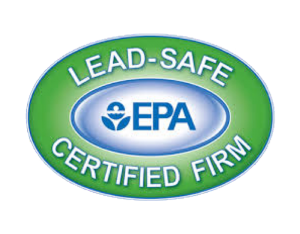Renovation, Repair and Painting (RRP) Program: Consumers
Do you own a pre-1978 home and are you planning a renovation, repair or painting (RRP) project? If so, EPA recommends homeowners hire a lead-safe contractor certified and trained in lead-safe work practices, a group of techniques to prevent lead exposure during RRP projects. Find an EPA or state lead-safe certified contractor in your area
If you decide to do the work yourself, make sure to use lead-safe work practices for do-it-yourself (DIY) home renovation projects to protect you and your family.
Homes built before 1978 are more likely to have lead-based paint. The federal government banned consumer use of lead-based paint in 1978, but it is still present in millions of homes. Common RRP activities that disturb lead-based paint (like sanding, cutting, replacing windows, and more) can create hazardous lead dust and chips which can be harmful to adults and children. Home RRP projects that create even a small amount of lead dust are enough to poison your child and put your family at risk.
For more information about lead and how to protect your family:
- Read the Protect Your Family from Lead in Your Home pamphlet (available in 12 languages)
- Review EPA's Renovate Right guide that describes why you should a hire lead-safe renovator.
- Watch one of these videos that discuss the RRP rule and show how a contractor should remodel, repair or paint a pre-1978 home the lead-safe way.
- Doing a renovation yourself? Learn how to keep you and your family safe while you renovate your home with some do-it-yourself lead-safe work practices.
- Is your child’s day care or school being renovated, repaired, or painted? Learn more about renovations in child-occupied facilities.
- Learn about lead in your home or what you can do to protect your child where they learn and play.

